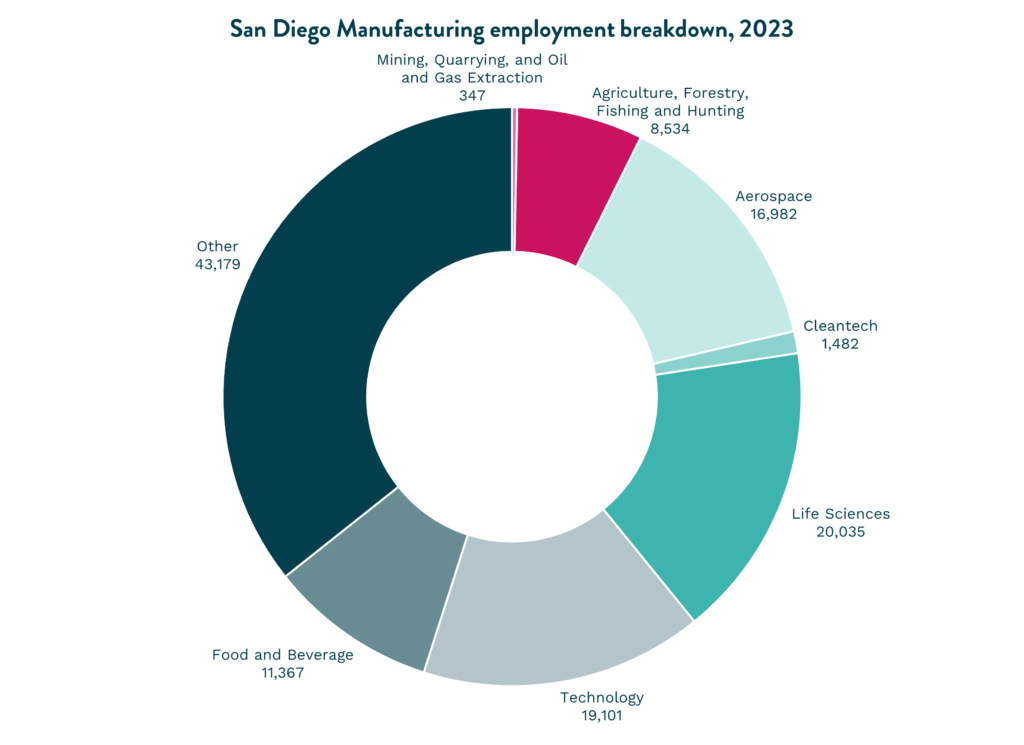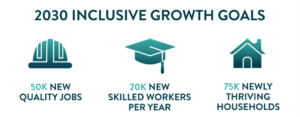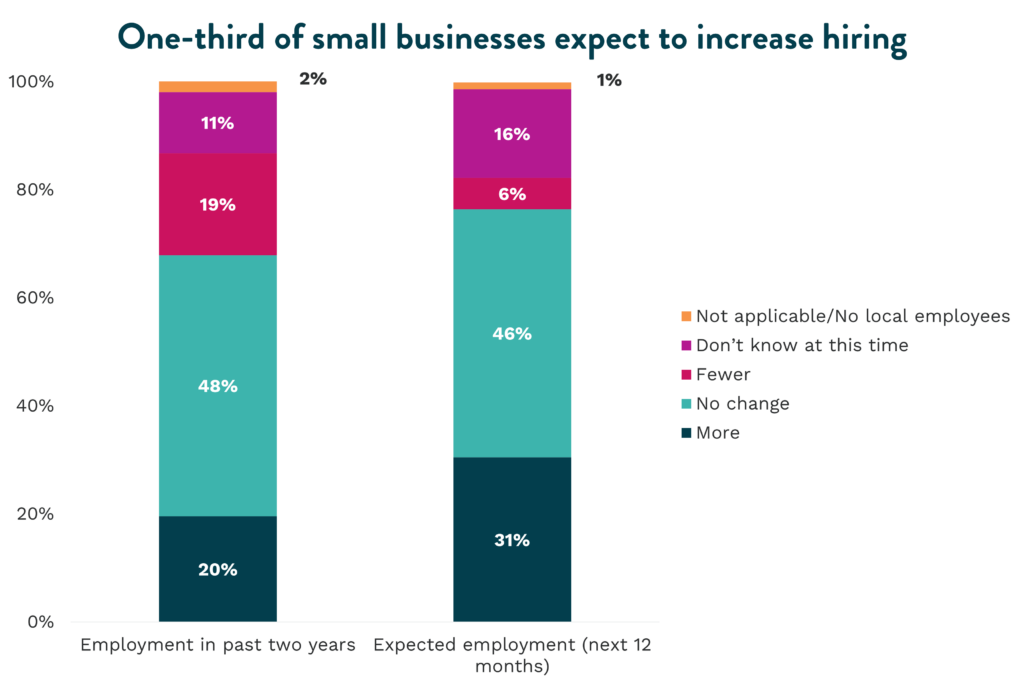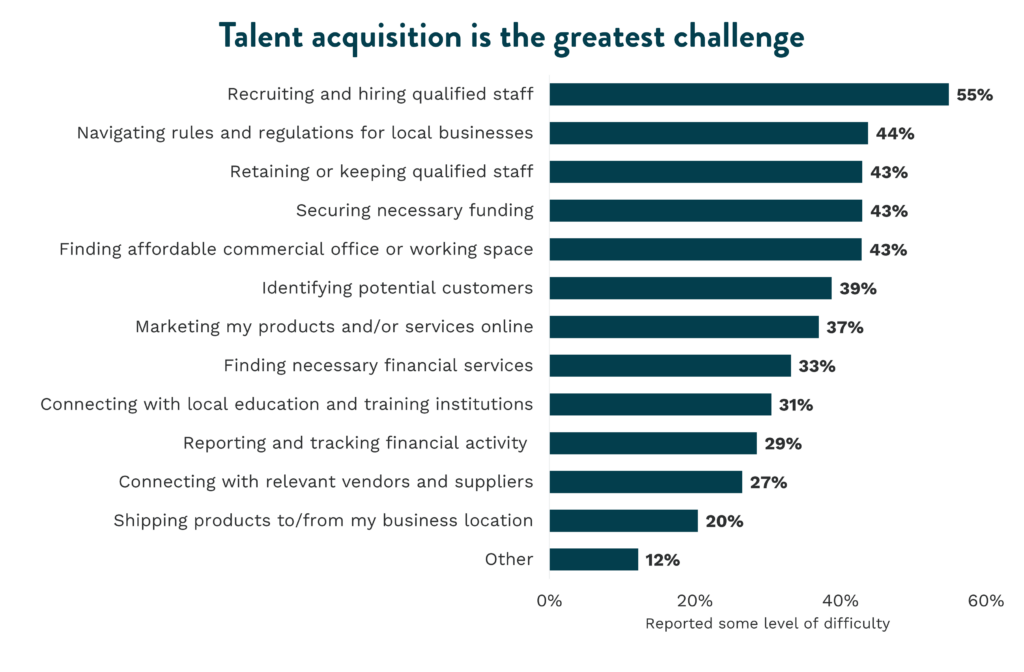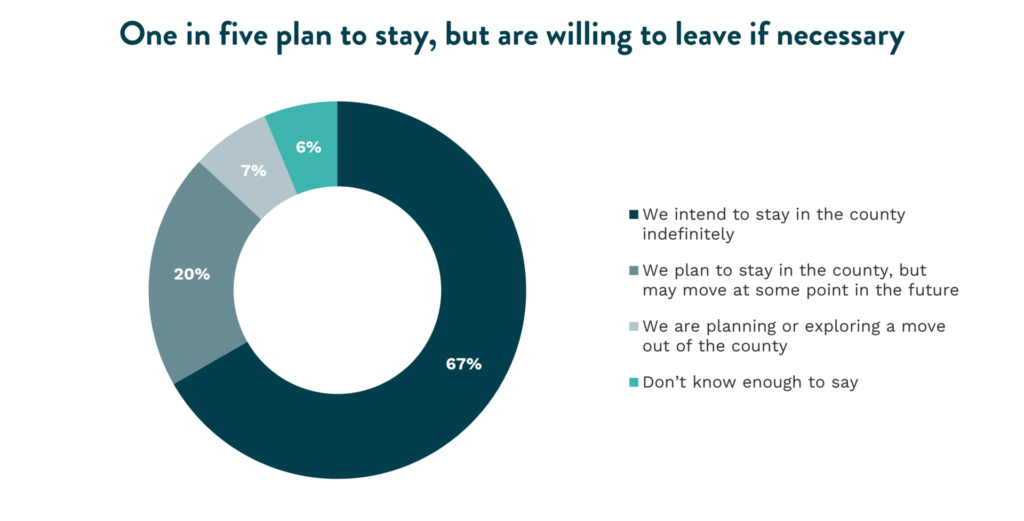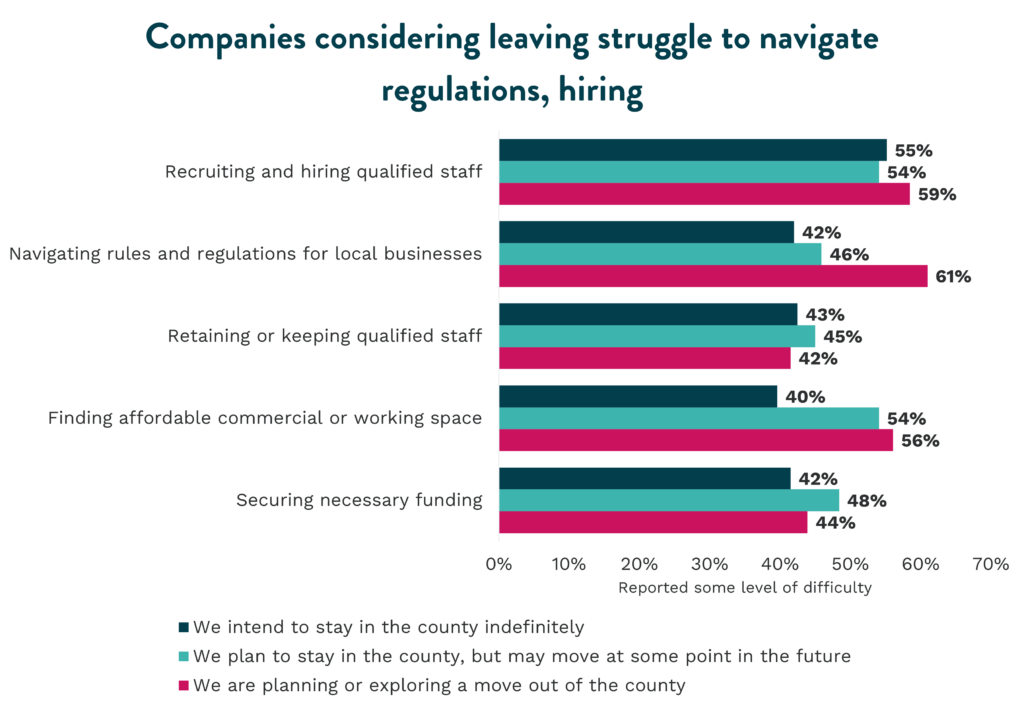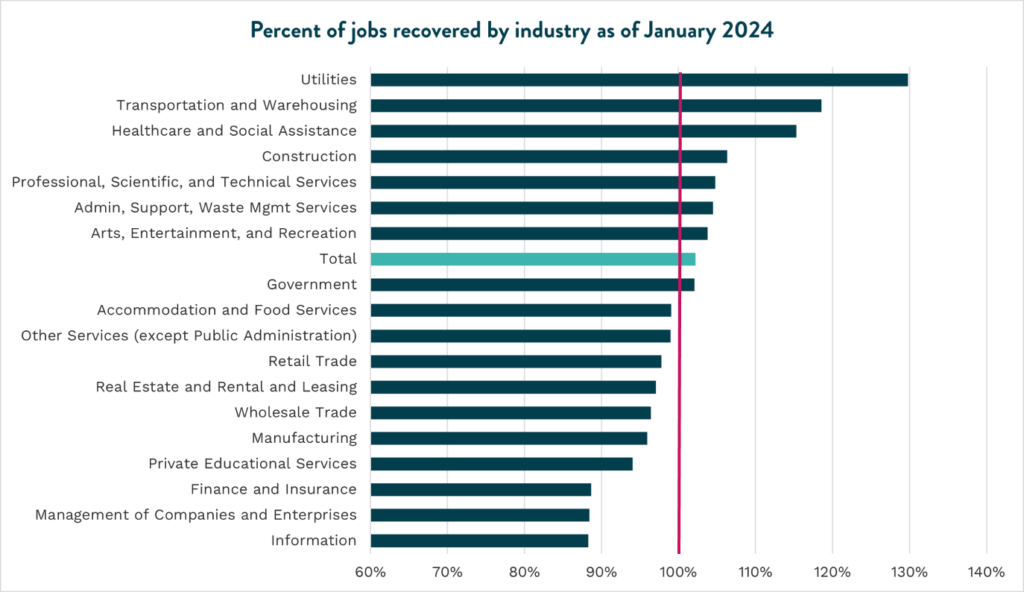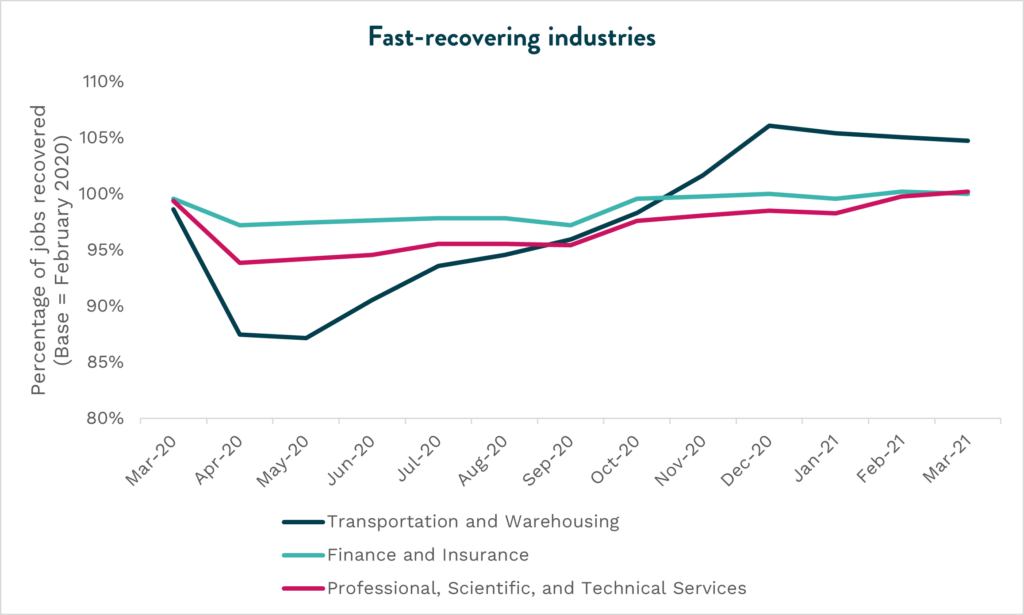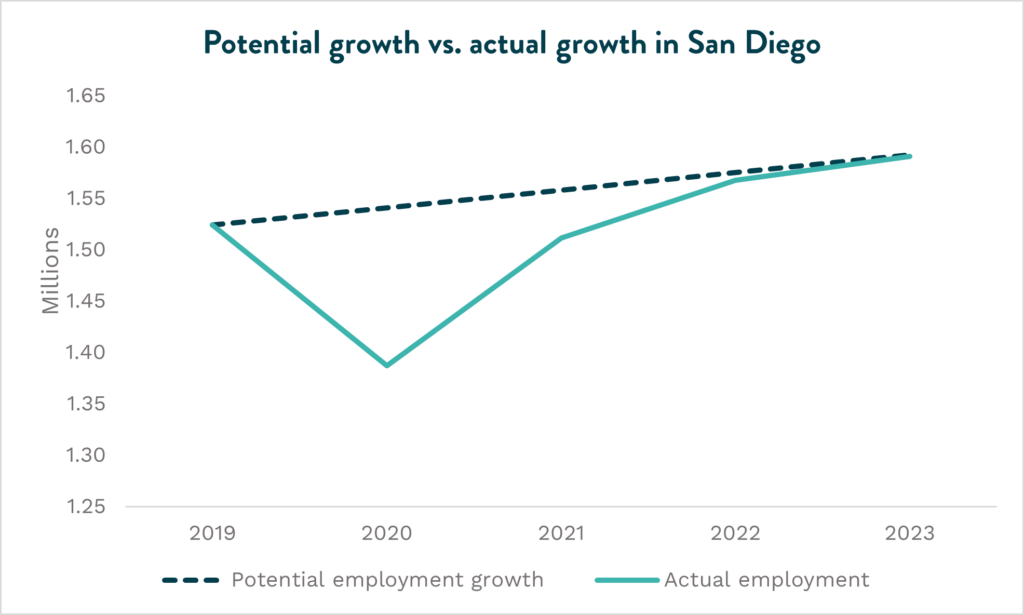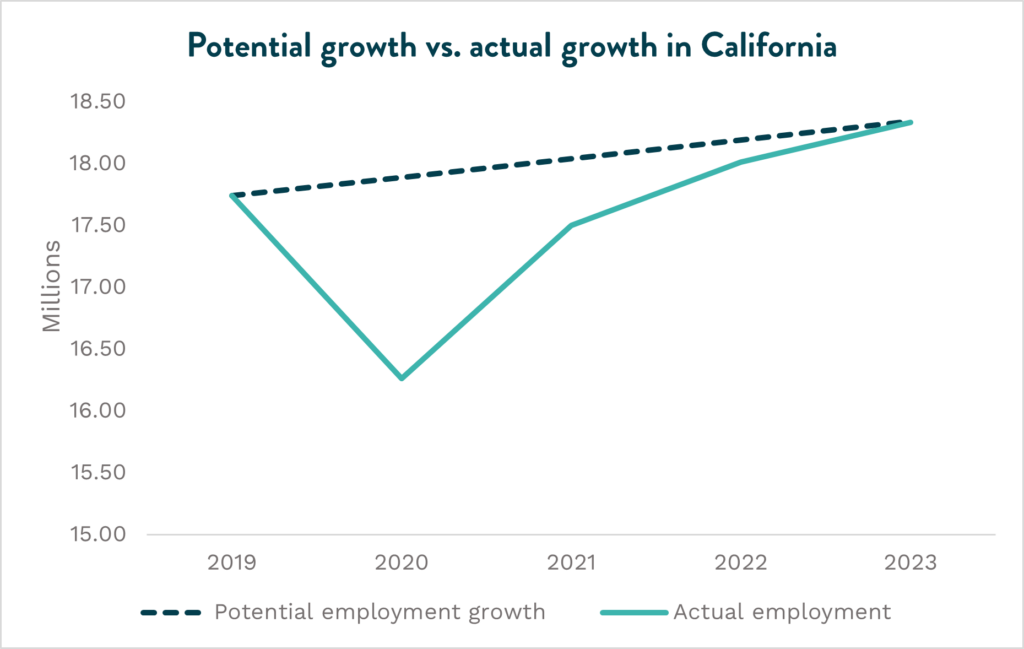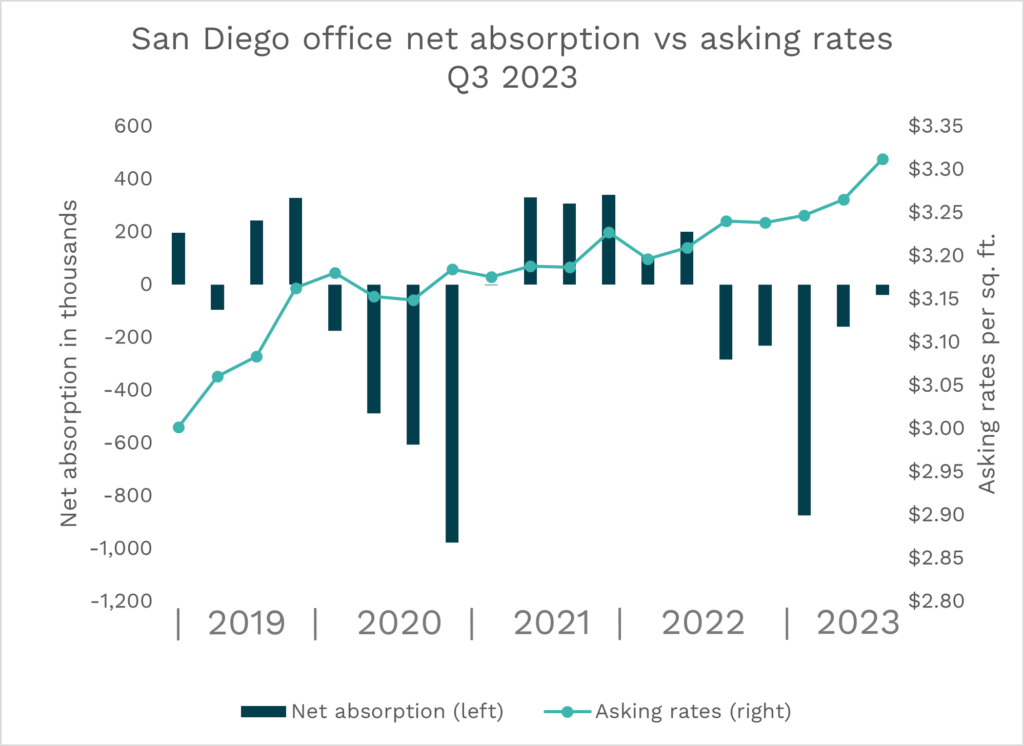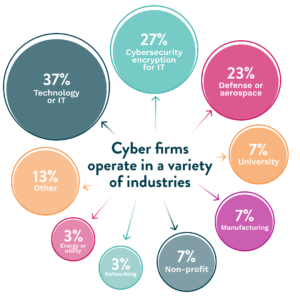This blog post is a part of a larger series in celebration of Manufacturing Month, sharing key trends from our report on San Diego’s Manufacturing sector.
Cross-border manufacturing in San Diego has significant untapped potential. With five ports of entry, the Baja California region is one of the most accessible and lucrative for international expansion. While some companies are just beginning to explore it, many of San Diego’s most successful, innovative brands have already established a manufacturing presence in Tijuana and surrounding cities.
According to Tijuana EDC, Baja California already has 960 manufacturing facilities with plenty of room for growth. The manufacturing industry represents 65 percent of Tijuana’s GDP. Just 30 minutes to the south, manufacturing in Mexico offers cost effective products without compromising quality, backed by a steady supply of highly skilled labor.
Here are three common myths about cross-border manufacturing and how San Diego companies have been able to flourish in the binational region.
The myth: Lack of infrastructure makes it more expensive to manufacture in Mexico than advertised.
The region has made significant strides with modernizing infrastructure including upgrades to many points of entry. For example, major investments in the Otay Mesa II Port of Entry, funded primarily by the US, are set to reduce traffic congestion by up to 50 percent. This improvement will further enhance the cost efficiency of cross-border trade and manufacturing operations, making it even more attractive for San Diego companies to consider these opportunities.
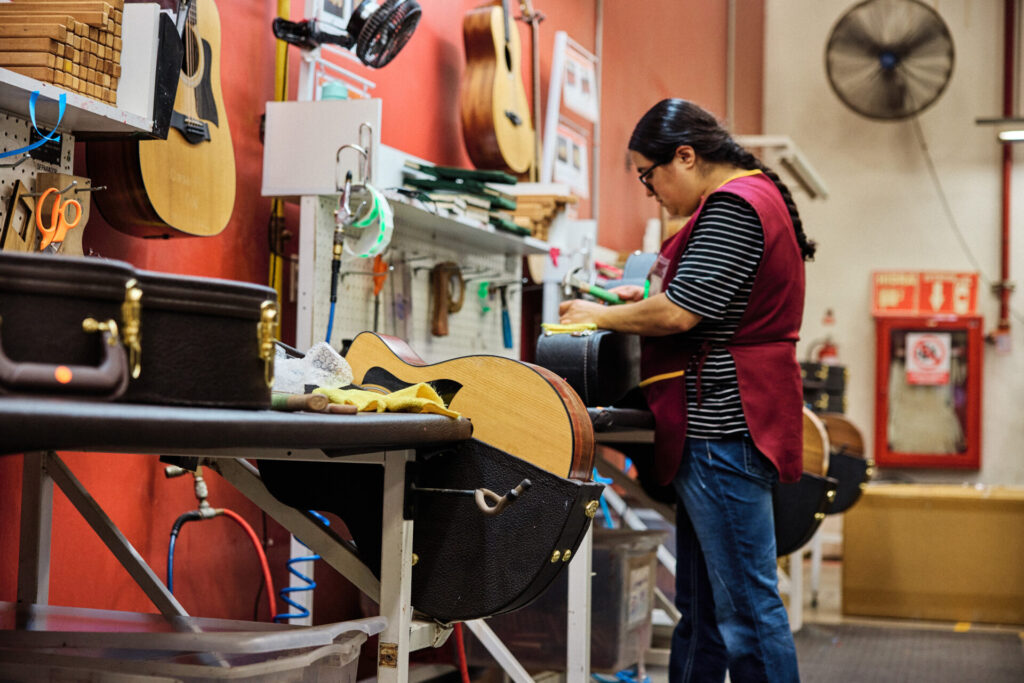
Taylor Guitars is a prime example of a San Diego company benefiting from cross-border manufacturing. Its operations in Tecate are thriving due to cultural alignment and strategic advantages. A business leader at Taylor Guitars highlights the key benefits and programs it utilizes, such as the IMMEX program, which allows temporary importation of goods that are transformed or repaired and then exported.
“Manufacturing in both San Diego and Tecate gives Taylor Guitars a competitive advantage. Our Tecate operation allows us to produce quality guitars at accessible price points, reaching a broader audience, while our San Diego facility focuses on more specialized, premium instruments. Together, they enable us to deliver a diverse range of products without compromising on craftsmanship or innovation.”
– Ed Granero, VP of Product Development, Taylor Guitars
The myth: Mexico doesn’t offer high-quality manufacturing.
Many manufacturers in Tijuana work with leading global companies in high tech industries including Medical Devices, Electronics, Automotive and Aerospace. These companies require high quality and rigorous quality control measures to ensure compliance with international standards. For instance, ResMed operates a manufacturing facility in Tijuana, producing advanced medical devices like CPAP machines with stringent quality assurance protocols. Similarly, other high-tech firms like Qualcomm and Medtronic trust local partners to deliver precision-engineered products that comply with their exacting requirements.
The myth: There isn’t a strong talent pipeline present in Mexico.
The presence of high-quality manufacturing and modernized infrastructure is complemented by access to a highly capable talent pool, supported by top universities in Tijuana and advanced manufacturing capabilities in the region.
Tijuana provides a hub for a strong pool of high-skilled workers. Baja California is home to many world class universities, 37 of which are in Tijuana. Among these include top-rated schools University of Tijuana and the Tijuana Institute of Technology, which contribute to more than 3,700 annual degrees in STEM fields. Many graduates choose to remain in the region, where they can live at a lower cost and help drive the local economic growth.
Cross-border manufacturing offers San Diego companies a powerful combination of cost efficiency, advanced capabilities, and access to world class talent. By leveraging the benefits of San Diego’s proximity and relationship with Baja California, manufacturing companies not only reduce their costs but also enhance production capabilities and increase competitiveness. As infrastructure investments continue to improve cross-border logistics, and with the support of programs like IMMEX, the future looks bright for San Diego’s cross-border manufacturing landscape.
Resources to explore cross-border trade opportunities
- World Trade Center San Diego and its Export Specialty Center works directly with companies—free of charge—to help them expand internationally and grow in San Diego.
- Tijuana EDC provides specialized business consulting and logistics services for companies that are considering choosing contract manufacturing in Mexico to grow.
This blog post is a part of a larger series in celebration of Manufacturing Month. Click here to look at our previous deep dive on San Diego’s strong manufacturing talent pool. To read our full analytical manufacturing report click here.





